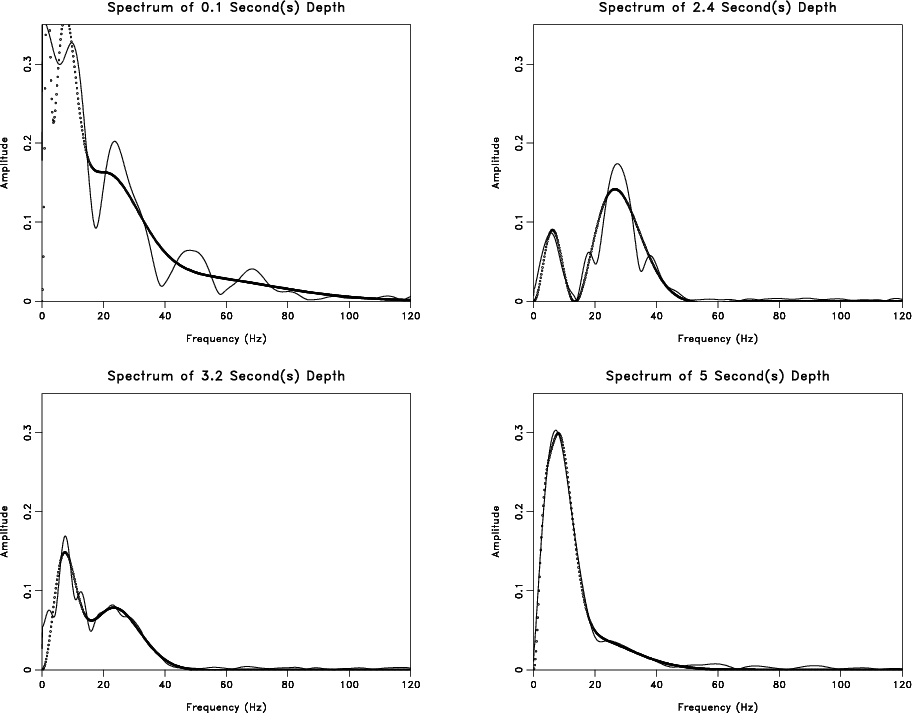|
|
|
|
Automated spectral recomposition with application in stratigraphic interpretation |

|
|---|
|
tf2
Figure 3. Four time depths, 0, 2, 3 and 5 second have been plotted in (a), (b), (c) and (d) to show spectral recomposition reconstructs Ricker component at different depths. Field data results have been plotted in solid black lines. The spectral recomposition results have been plotted in dotted red lines. |
|
|

|
|---|
|
tf
Figure 4. (a) One single seismic trace; (b) Time-frequency analysis result of the trace in (a); (c) Automated spectral recomposition reconstructs Ricker components at each time depth. The reconstructed result is quite consistent with time-frequency analysis in (b). |
|
|
|
|
|
|
Automated spectral recomposition with application in stratigraphic interpretation |